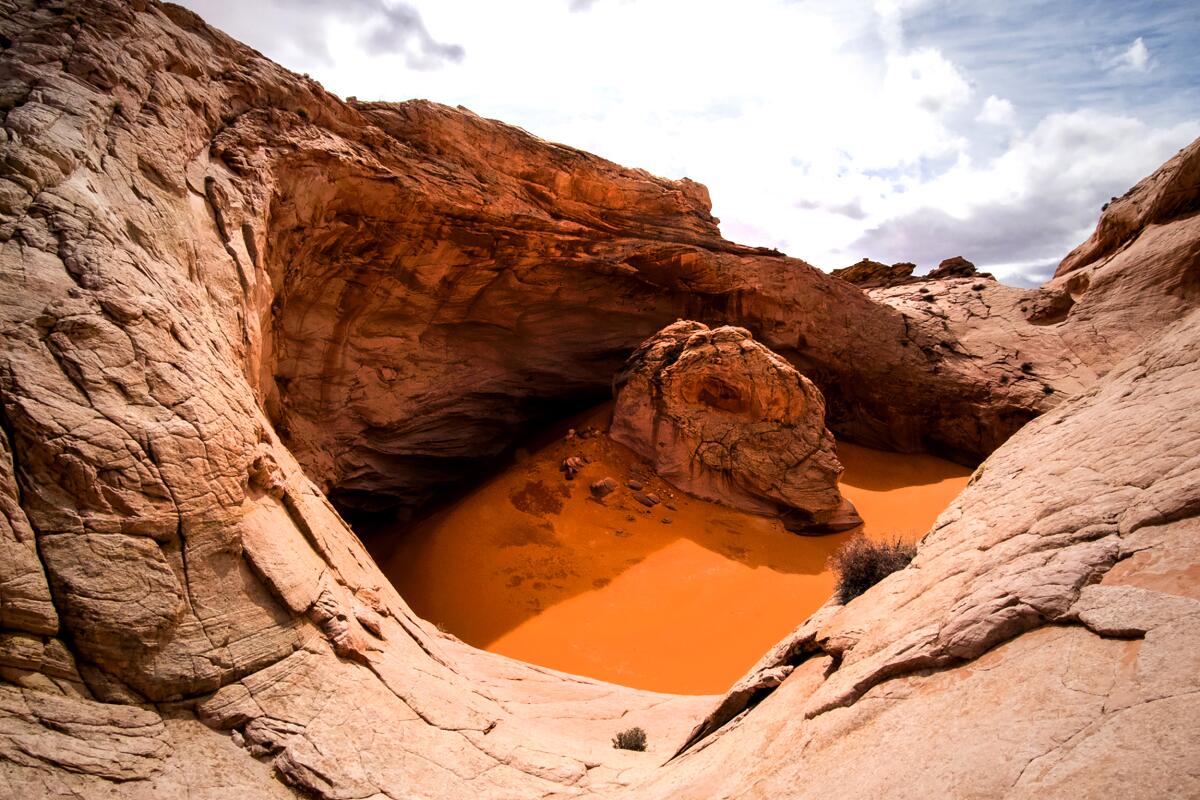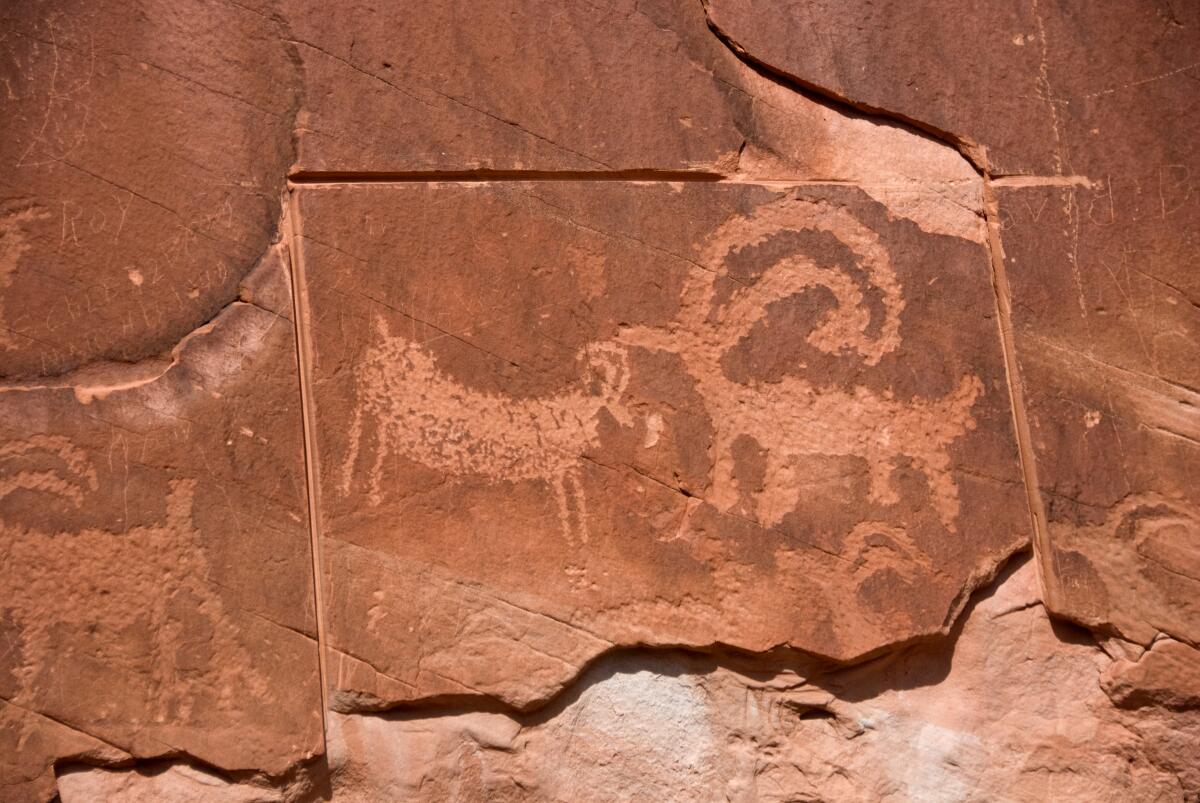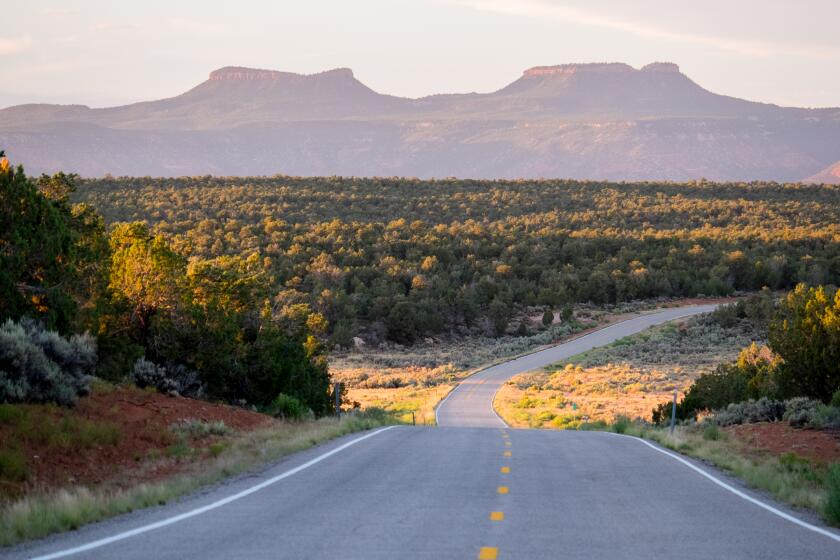Biden saved what Trump dismantled in Utah. But what will ‘save’ mean?

- Share via
On Oct. 8, President Biden righted two of the previous president’s many wrongs. In a pair of precise and eloquent proclamations, Biden restored the boundaries of Bears Ears and Grand Staircase-Escalante — the Utah national monuments that Donald Trump had eviscerated four years earlier.
Conservation biology buttresses Biden’s fix. We know that big reserves connected by habitat corridors preserve land and life better than isolated islands of wildness. Large monuments like 1.9-million-acre Grand Staircase and 1.35-million-acre Bears Ears do a much better job at protecting all the “objects” worth preserving — as required by the Antiquities Act, the 1906 law that allows presidents to establish national monuments.
There’s no telling which object might be the key to resilience. As Aldo Leopold famously observed, “To keep every cog and wheel is the first precaution of intelligent tinkering.”
Utah’s public-lands-hating Republicans called it an insult, but the restoration of Bears Ears and Grand Staircase-Escalante is a win for Native Americans, nature and all of us.
With restoration, monument advocates celebrated. Bears Ears was again protected, Grand Staircase saved — but just what does “protect” or “save” mean? At both monuments, the development of all-important new management plans is in the works. These will determine how protection works day to day on the ground.
For Bears Ears, a milestone was reached on June 18, when the five Native nations of the Bears Ears Inter-Tribal Coalition signed a cooperative management agreement with federal agencies, becoming true partners in devising the plan for protecting Bears Ears. At Grand Staircase, a formal co-management agreement with tribes is a long-term goal rather than a “shall do” line item in Biden’s proclamation.
For both monuments, the management plans will be the product of many meetings and much wrangling among a range of stakeholders — federal, state and local governments, advisory committees, Native nations, local business owners, conservationists, scientists and the public.
Starting this summer, anyone can participate in the process and submit comments. As board members of Grand Staircase Escalante Partners, we’re focusing on Grand Staircase.
In broad terms, the monument’s needs are well documented — full staffing by qualified people; respectful recreation; holistic, science-based conservation; continuing study. The managing agency, the Bureau of Land Management, has until March 2024 to shape a plan that meets those needs.
Grand Staircase was the first national monument to be managed by the BLM, an agency long defined by its “multiple use” mission. BLM lands were often more developed — or neglected — than protected. But Grand Staircase was different. In the years immediately after President Clinton’s founding 1996 proclamation, the monument became the flagship and model for “conservation, protection, and restoration,” as articulated in the law establishing the National Conservation Lands system on BLM land.

Grand Staircase pioneered hybrid staffing, with scientists working for the monument and collaborating with university colleagues to create baselines for future research and monitoring — all while making a flurry of new discoveries.
They started from scratch in this last place in the continental U.S. to be mapped. Field teams headed out to identify what lived, grew, migrated through or was deposited here, above, on and below the Earth’s surface.
Paleontologists found 15 previously unknown dinosaurs on the Kaiparowits Plateau alone. Understanding “Moqui marble” iron concretions at Grand Staircase explained similar “blueberries” when they turned up on Mars. And, still, barely 7% of the monument has been inventoried for cultural or paleontological resources.
Under succeeding administrations, shrinking budgets decimated staffing. Many BLM managers, strongly tied to rural western values that prioritize grazing and mining, have never fully embraced a conservation mission new to the agency. Consultation with tribes and protecting access to their cultural sites and traditional practices, never robust, still lacks structures for meaningful collaboration.
And then came President Trump’s diminishment of the monument by half, followed by a weak management plan more concerned with expanding grazing, recreation and mineral rights than protecting objects and values for which the monument was established.
Relics: Grand Staircase- Escalante has the world’s most continuous record of Late Cretaceous life.
At the same time, experienced professionals were fleeing Trump’s beleaguered public lands agencies, especially the BLM, while the Trump administration stocked leadership positions with loyalists. Even with the arrival of the Biden administration, which champions public lands, the agency’s — and monuments’ — staffing remains woefully inadequate, and many new hires lack experience and institutional memory.
And so Grand Staircase remains at risk. Sixteen backcountry rangers patrolled Grand Staircase’s nearly 2 million acres in 2000; now there are four. Overworked staff can’t implement reforms let alone deal with feral cattle trampling protected areas or prevent off-road vehicle damage to fragile soils. With such inadequate resources and no scientists other than a single paleontologist, the BLM had no choice but to outsource the writing of the draft Grand Staircase master plan to an environmental consulting firm.
As concerned citizens participate in the planning process for Grand Staircase this summer, our job will be to suggest, urge and remind the BLM to think big. The vision behind the next management plan must acknowledge America’s dark legacy of stolen land and advance the role of Indigenous cultures and their ecological knowledge in protecting the landscape and its artifacts. It must focus as well on climate resilience, including water capture in the face of aridification, and it must prioritize the survival of critical species and habitats.
Michael Rosenzweig, professor of ecology at the University of Arizona, introduced a concept to move us forward through the thicket of interests that surrounds Grand Staircase, “reconciliation ecology.” The process links science and conflict resolution. It emphasizes meeting other species at least halfway and learning to share resources. Reconciliation can bring together the full spectrum of stakeholders, from Zuni Pueblo elders, sagebrush-rebel county commissioners and conservation activists to BLM range managers.
A reconciled community can make these deliberations a model for achieving a workable and visionary plan for managing our wild, treasure-filled public lands — civil, respectful, in full view of the public.
Grand Staircase-Escalante is, in the words of Biden’s proclamation, “an extraordinary landscape” filled with “rare, fragile, or vulnerable” objects, “vast and austere,” a “living laboratory” “rich with opportunities for adventure and self-discovery.”
Let’s keep it that way. That’s what it means to save and protect Grand Staircase.
Writer and photographer Stephen Trimble has been advocating for conservation in Utah’s red rock canyons for more than five decades. Carolyn Z. Shelton managed the science and visitor services division at Grand Staircase from 2007 to 2016.
More to Read
A cure for the common opinion
Get thought-provoking perspectives with our weekly newsletter.
You may occasionally receive promotional content from the Los Angeles Times.










